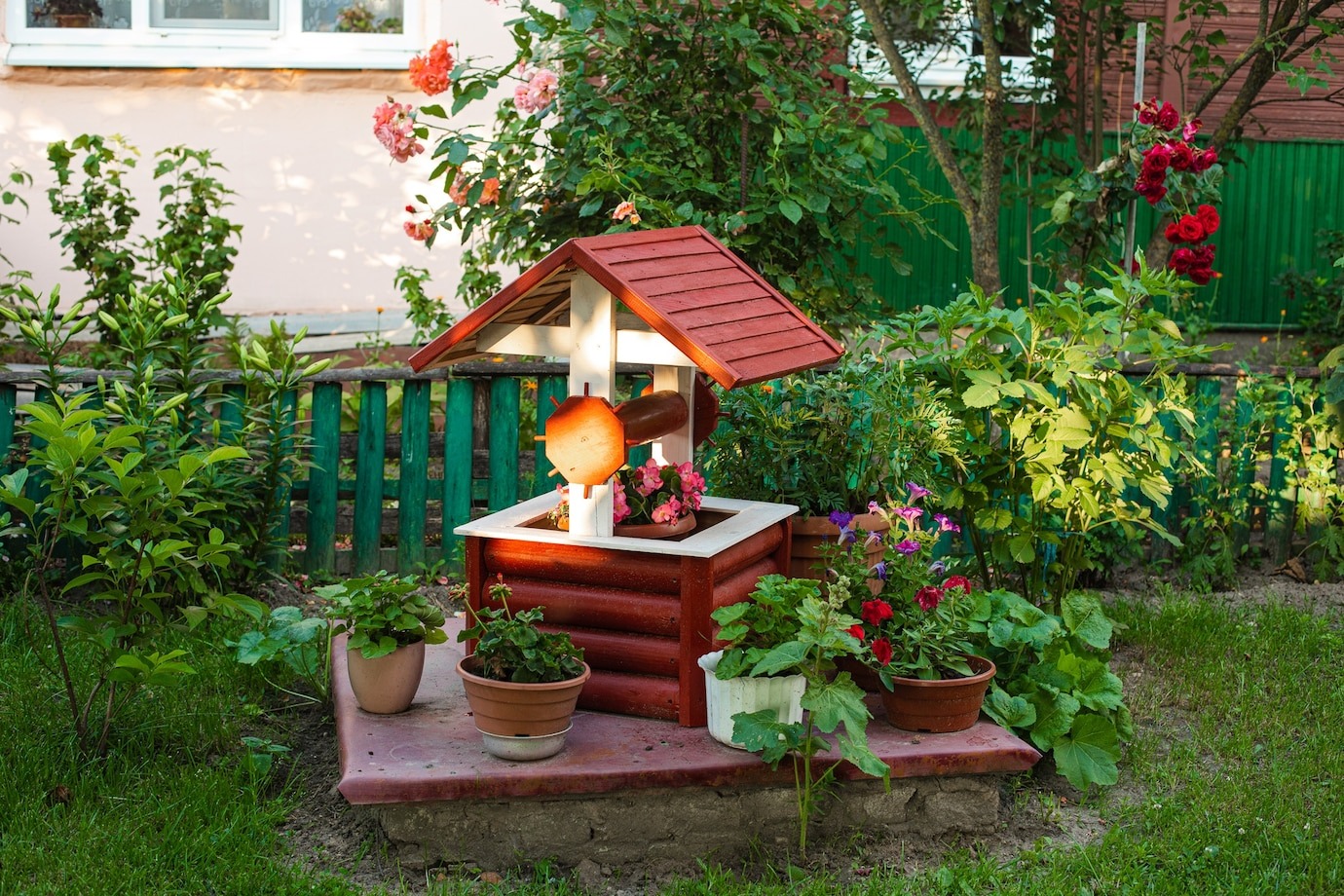Gardens are not just about the plants you grow but the ambiance you create. Thoughtful garden décor, strategic design, and harmonious color choices can transform any outdoor space into a serene, visually pleasing retreat. This blog post will explore various elements used in garden décor, design principles, and tips on achieving color harmony in your garden.
Essential Elements of Garden Décor
1.Garden Furniture
- Benches and Seating: Comfortable and stylish seating areas invite relaxation and provide focal points within the garden. Materials can range from rustic wood to sleek metal or wicker.
- Tables: Garden tables, often paired with seating, offer a place for outdoor dining or a spot to display potted plants and decorations.
2.Water Features
- Fountains: Adding the soothing sound of trickling water, fountains can be classic stone, modern stainless steel, or whimsical designs.
- Ponds and Water Gardens: These can range from small container ponds to larger installations, often including fish and aquatic plants.
3.Garden Ornaments and Statues
- Statues: From classical figures to abstract art, statues can provide a strong visual statement.
- Ornaments: Items like birdbaths, wind chimes, and garden gnomes add character and charm.
4.Lighting
- Solar Lights: Eco-friendly and easy to install, solar lights can line pathways or highlight specific garden areas.
- String Lights: Perfect for creating a magical ambiance, especially in seating or dining areas.
- Lanterns and Lamps: These add a cozy, inviting glow and can be moved around as needed.
6.Planters and Containers
- Pots and Planters: Available in a variety of materials like terracotta, ceramic, and metal, they are perfect for adding height and structure.
- Hanging Baskets: Great for adding color at eye level or higher and can be particularly effective in smaller spaces.
6.Garden Structures
- Arbors and Trellises: These support climbing plants and can create beautiful, natural entrances or partitions.
- Pergolas and Gazebos: Providing shade and structure, these are ideal for creating outdoor living spaces.
7.Pathways and Borders
- Stone and Gravel Paths: Define areas and guide movement through the garden, while adding texture and interest.
- Edging: Keeps garden beds neat and can be made from stone, metal, or plastic.
Principles of Garden Design
1.Unity and Harmony
Achieving a cohesive look involves choosing décor and plants that complement each other in style and color. Repeating elements like materials and colors throughout the garden helps to tie everything together.
2.Balance
Symmetrical designs (formal balance) create a sense of order, while asymmetrical designs (informal balance) can feel more natural and dynamic.
3.Proportion and Scale
Ensuring that elements fit well within the space is crucial. Large statues in a small garden can overwhelm, while tiny ornaments might get lost in a spacious yard.
4.Rhythm and Movement
Creating a sense of movement can be achieved through the repetition of elements like plants, colors, or structures. Pathways and water features can also guide the eye and encourage exploration.
5.Focal Points
Draw attention to specific areas with striking features such as a fountain, sculpture, or a particularly beautiful plant arrangement.
Achieving Color Harmony in Your Garden
1.Understanding Color Theory
- Primary Colors: Red, blue, and yellow – the building blocks of all other colors.
- Secondary Colors: Green, orange, and purple – made by mixing primary colors.
- Tertiary Colors: Combinations of primary and secondary colors, like red-orange or blue-green.
2.Color Schemes
- Monochromatic: Variations of a single color for a serene and cohesive look.
- Analogous: Colors next to each other on the color wheel (e.g., blue, blue-green, green) for a harmonious blend.
- Complementary: Opposite colors on the color wheel (e.g., red and green) for a vibrant, eye-catching contrast.
- Triadic: Three evenly spaced colors on the color wheel (e.g., red, yellow, blue) for a balanced yet dynamic palette.
3.Using Color in Garden Design
- Focal Points: Use bold colors to highlight focal points and draw the eye.
- Background Colors: Softer, more muted colors work well in the background to enhance the perception of space.
- Seasonal Changes: Consider how colors will change throughout the seasons, ensuring year-round interest.
- Plant Combinations: Mix flowering plants with foliage to create depth and texture. For example, pairing purple flowers with silver foliage can create a striking contrast.
4.Practical Tips for Color Harmony
- Start Small: Experiment with color in a small area before committing to larger changes.
- Use Repetition: Repeat colors throughout the garden to create a sense of unity.
- Consider Bloom Time: Plan for a succession of blooms to maintain color throughout the growing season.
- Accentuate with Décor: Use pots, furniture, and ornaments to introduce or complement colors in your plantings.
Conclusion
Creating a beautiful and harmonious garden involves more than just planting flowers. By thoughtfully incorporating elements of décor, following sound design principles, and paying attention to color harmony, you can transform your outdoor space into a true sanctuary. Whether you have a small urban garden or a sprawling countryside estate, these tips and ideas will help you design a garden that is not only visually stunning but also a joy to spend time in.



